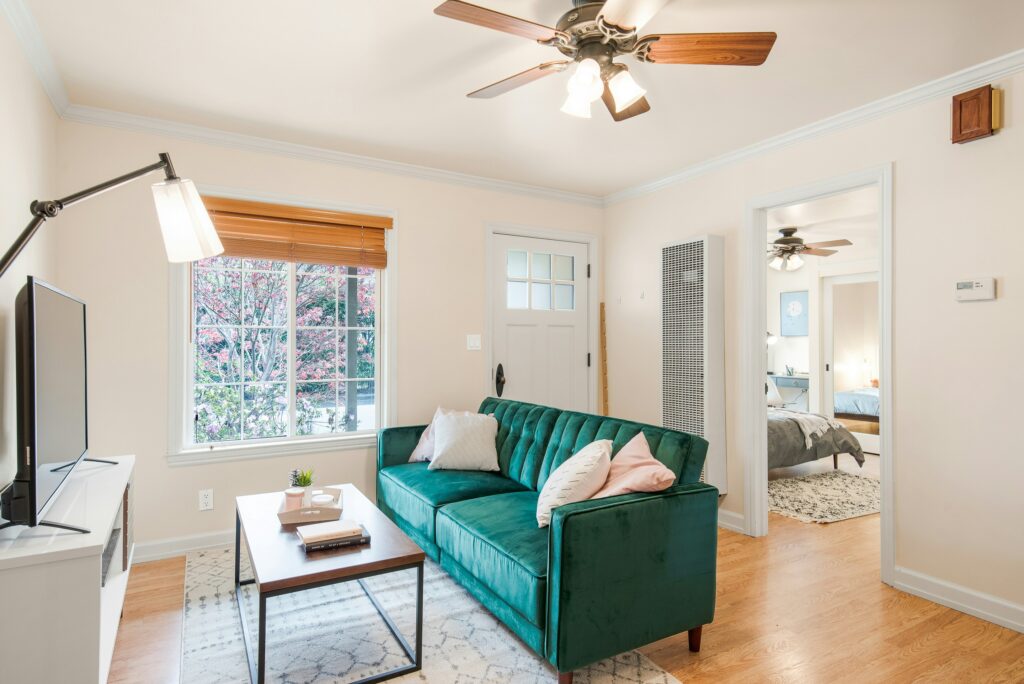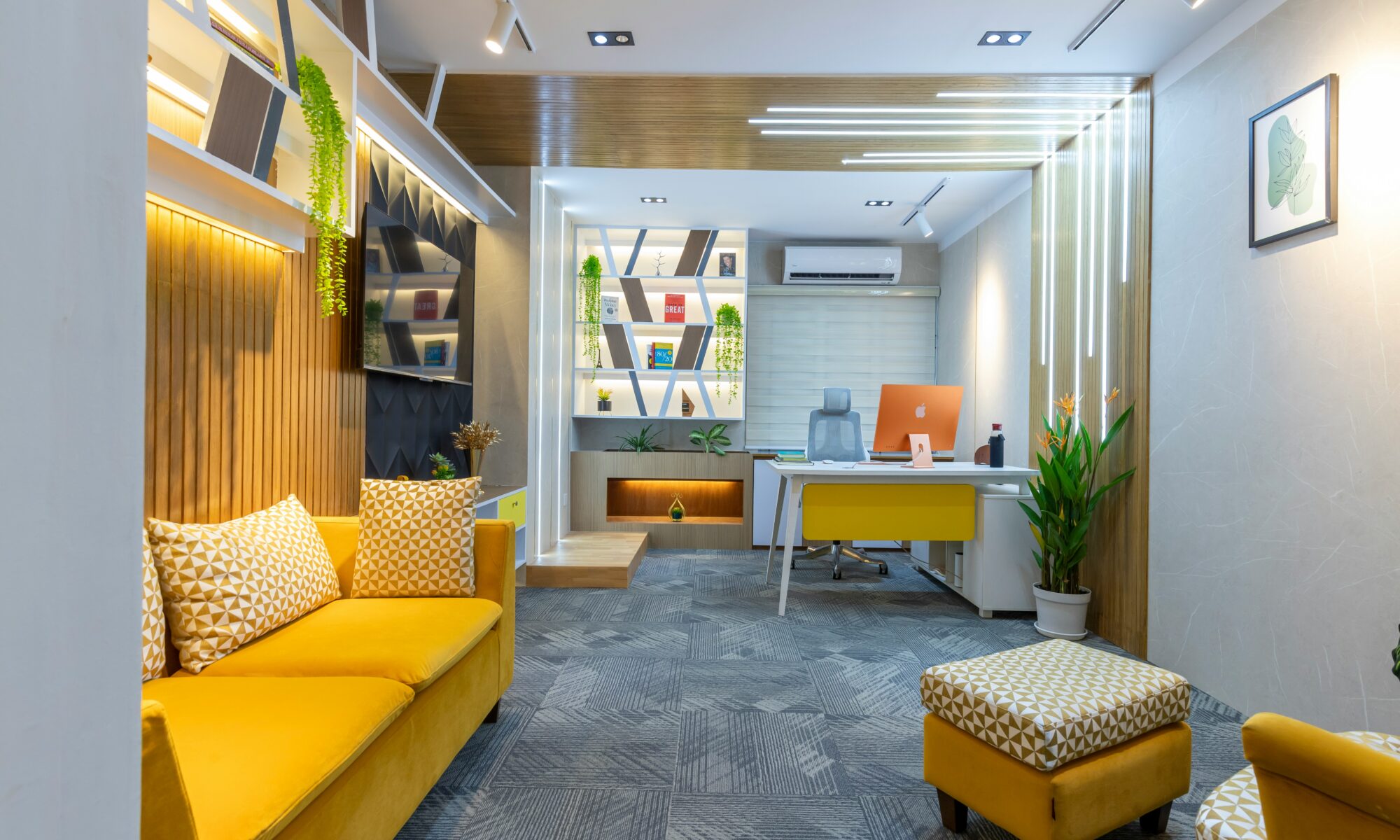Aircons are a staple in many households, especially in Singapore’s hot and humid climate. Despite their importance, many myths surrounding aircon usage and maintenance persist. These misconceptions can lead to improper use, higher energy bills, or even damage to your unit. Let’s set the record straight by debunking seven common aircon myths.
- Myth 1: Setting the Temperature Lower Cools the Room Faster
- Myth 2: You Don’t Need to Service Your Aircon Regularly
- Myth 3: Leaving the Aircon on All Day Saves Energy
- Myth 4: Aircon Use is Unhealthy
- Myth 5: Bigger Aircons Are Always Better
- Myth 6: Aircons Can Only Cool, Not Dehumidify
- Myth 7: Ceiling Fans and Aircons Shouldn’t Be Used Together
- Tips for Optimizing Aircon Use
Myth 1: Setting the Temperature Lower Cools the Room Faster
One of the most prevalent myths is that setting your aircon to the lowest temperature cools the room faster. While it might feel intuitive, this differs from how aircon works.
Fact: Aircons cool at a consistent rate regardless of the temperature setting. Lowering the temperature drastically will not speed up the cooling process but will keep the compressor running longer, leading to higher energy consumption. Instead, set your aircon to a comfortable temperature, typically around 24–26°C, for optimal cooling and efficiency.
Myth 2: You Don’t Need to Service Your Aircon Regularly
Some people believe aircon maintenance is only necessary when problems arise. This approach, however, can lead to costly repairs in the long run.
Fact: Regular servicing is essential for maintaining your aircon’s efficiency and longevity. Dirty filters and coils force the unit to work harder, consuming more energy and reducing cooling performance. Schedule professional servicing every three to six months to keep your unit in shape.

Myth 3: Leaving the Aircon on All Day Saves Energy
Leaving the aircon running continuously is more efficient than turning it on and off as needed.
Fact: Leaving your aircon on all day wastes energy and increases your electricity bill. It’s better to use a programmable timer to regulate cooling based on your schedule. For example, set the aircon to turn on 30 minutes before you arrive home instead of running it all day.
Myth 4: Aircon Use is Unhealthy
Some claim aircon causes illnesses like colds or respiratory problems, mainly when used for extended periods.
Fact: Properly maintained aircons improve indoor air quality by filtering dust, allergens, and pollutants. Issues arise when filters are not cleaned regularly, allowing contaminants to circulate. Ensure your aircon is serviced and the filters are cleaned or replaced to maintain a healthy indoor environment.
Myth 5: Bigger Aircons Are Always Better
It’s common to assume that a larger aircon unit will provide faster and more effective cooling.
Fact: The size of your aircon should match the size of the room. An oversized unit will cool the room too quickly, causing it to cycle on and off frequently, which wastes energy and leads to uneven cooling. Conversely, an undersized unit will need help to cool the space efficiently. Consult a professional to determine the right aircon size for your room.
Myth 6: Aircons Can Only Cool, Not Dehumidify
Many believe aircons are solely for cooling and do not affect humidity.
Fact: Aircons are designed to dehumidify as they cool. By removing excess moisture from the air, aircons create a more comfortable indoor environment, especially in humid climates like Singapore. Consider using the aircon with a dehumidifier for maximum comfort in rooms with persistent humidity issues.

Myth 7: Ceiling Fans and Aircons Shouldn’t Be Used Together
It’s often assumed that using a ceiling fan and aircon simultaneously is redundant or counterproductive.
Fact: Ceiling fans complement aircons by circulating cool air more effectively. This allows you to set your aircon at a slightly higher temperature while still feeling comfortable, which reduces energy consumption. Using both together can enhance cooling efficiency and lower your electricity bills.
Tips for Optimizing Aircon Use
To ensure your aircon works efficiently and effectively, keep these tips in mind:
| Regular Maintenance | Schedule routine servicing to clean filters, check refrigerant levels, and inspect the system for potential issues. |
| Optimal Temperature Settings | Keep your aircon set between 24–26°C for comfort and energy savings. |
| Seal the Room | Close doors and windows to prevent cool air from escaping and warm air from entering. |
| Use Energy-Saving Features | Take advantage of your aircon unit’s timers, sleep mode, or eco settings. |
| Upgrade If Necessary | If your aircon is outdated, consider investing in a modern, energy-efficient model with inverter technology. |
Final Thoughts
Understanding the facts behind these common aircon myths can help you use your unit more effectively, save on energy costs, and prolong its lifespan. Small changes can significantly affect performance and efficiency.
If you’re looking for professional aircon servicing in Singapore, consult reliable providers who can ensure your unit runs smoothly and keeps your home comfortable year-round. Don’t let myths hold you back — confidently enjoy cool, energy-efficient comfort!



You must be logged in to post a comment.